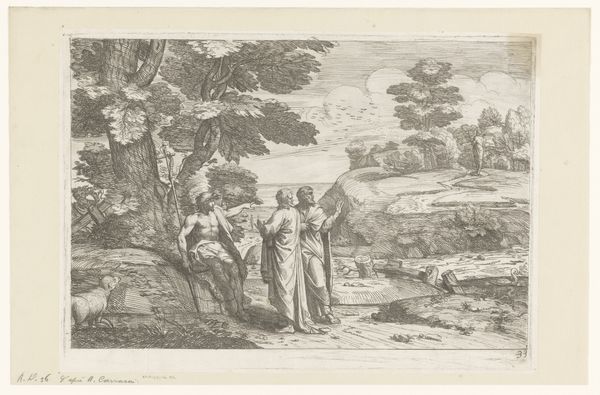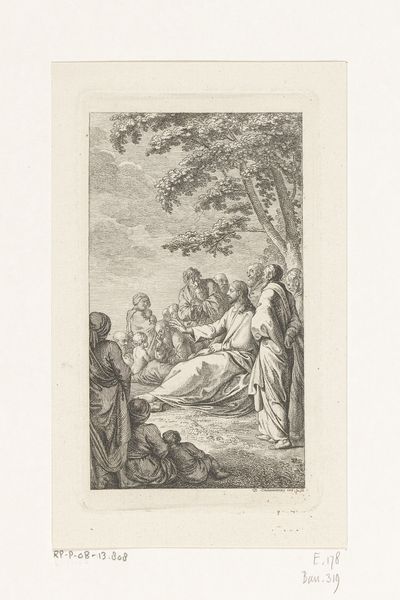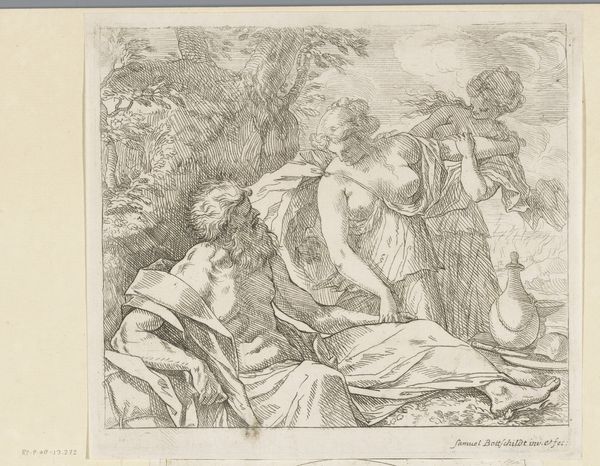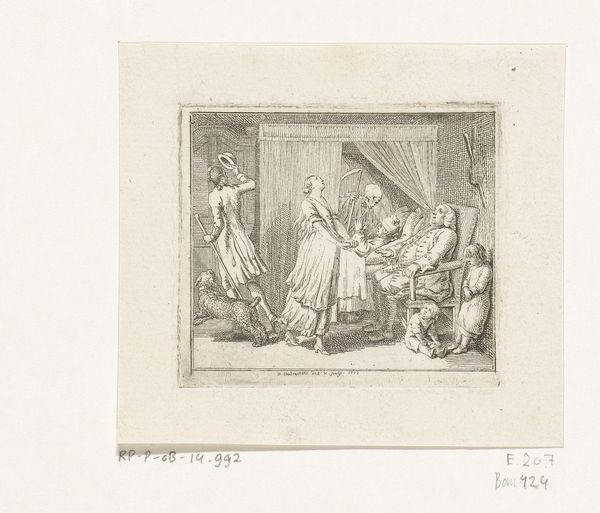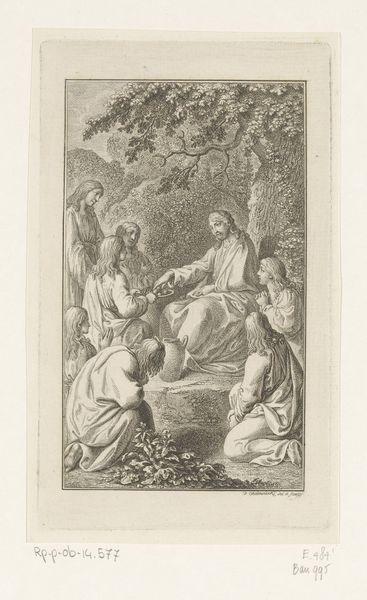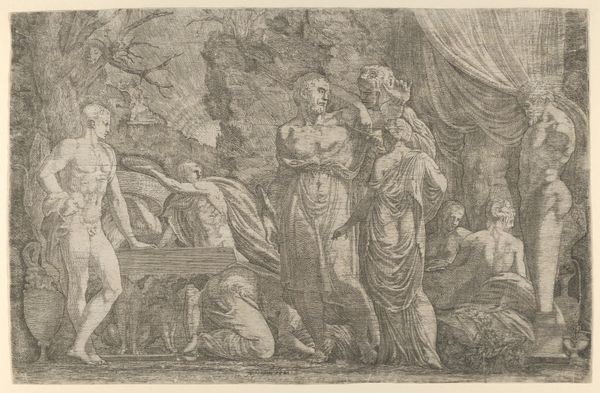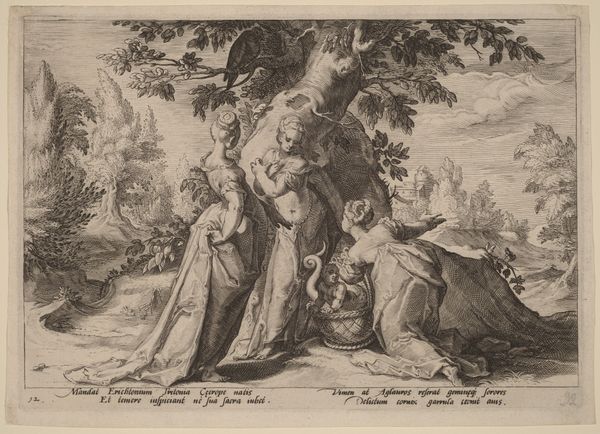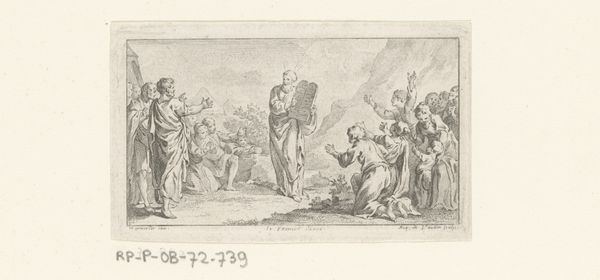
Dimensions: height 70 mm, width 92 mm
Copyright: Rijks Museum: Open Domain
Curator: Here we have Daniel Nikolaus Chodowiecki's "Opwekking van Lazarus," or "Raising of Lazarus," an engraving from 1778 held at the Rijksmuseum. Editor: My initial response is drawn to the line work—it’s so delicate and precise, giving a rather ghostly, ethereal quality to the figures and the scene. The stark contrast evokes a sense of drama, doesn't it? Curator: Absolutely, and considering Chodowiecki’s background, this print operates within the cultural context of the Enlightenment, where reason and skepticism were on the rise. Depicting a biblical miracle becomes an interesting exercise in representing the unexplainable in a very rational, graphic form. It was displayed alongside revolutionary artworks intended for popular understanding. Editor: Indeed, there is a graphic, didactic quality, but technically, the use of cross-hatching to build tone is fascinating. Look at the way he creates depth, especially around the entrance to the tomb. Light and shadow seem almost sculpted onto the figures, creating movement within the static frame. The relatively balanced composition also subtly heightens the miraculous tone. Curator: It also reflects the broader appeal to moral instruction that marked a key function of visual culture. The story itself was loaded. Resurrection was understood not just on the canvas but as part of societal reformation. Engravings allowed for distribution among a wider public, carrying the message of faith in ways accessible to everyday people, but what's your takeaway, really, of what we see here? Editor: The tension between this delicate rendering, an apparent embrace of a kind of sublime awe, and a scene steeped in baroque sensibilities feels potent to me. It’s a highly accomplished piece of technical artistry. Curator: And more than that, an object carrying social significance from an important revolutionary moment that pushed the use of artwork as social, even political, text. The fact it uses a well-known biblical scene suggests this engraving spoke a specific language within public sphere. Editor: It does provide for very thoughtful viewing.
Comments
No comments
Be the first to comment and join the conversation on the ultimate creative platform.

